When it comes to procurement, the last few years have seen an incredible amount of technology innovation and adoption. As procurement technology becomes more specialized and efficient, organizations shift from an all-in-one technology suite approach to a best-of-breed technology stack strategy.
Indeed, it’s easy to see the appeal of building a customized procurement technology stack. Rather than paying for a suite of procurement tools you don’t need and won’t use, you select the right tools for right now — knowing you can scale and integrate new technologies at any time. For many organizations, it’s a more cost-effective and user-friendly approach.
In this blog, you’ll see our list of the 23 best procurement technology tools that will advance your procurement team’s digital transformation journey in 2023. Each tool offers a unique approach, has helpful integration capabilities and would be a great addition to any procurement technology stack.
Procurement technology categories
- Compliance and risk management
- Contract management
- Environmental, social and governance tools
- Request management
- Spend management
- Supplier data intelligence
- Vendor experience management
- Artificial intelligence and automation
Compliance and risk management
1. OneTrust
Procurement technology category: Data governance and multi-region compliance
Description:
Arguably the biggest name in data and risk management, with more than 10,000 customers, OneTrust is a robust solution designed for large and enterprise businesses. Specializing in regulatory compliance, the platform manages both internal and external data security, privacy and governance.
Why we like it: For procurement teams, OneTrust is a tool with big ROI potential. Not only is it a resource for vendor management, but also a tool for internal assessments, data security management and more. Additionally, users in global organizations use the tool to navigate complex requirements that change based on jurisdictional location.
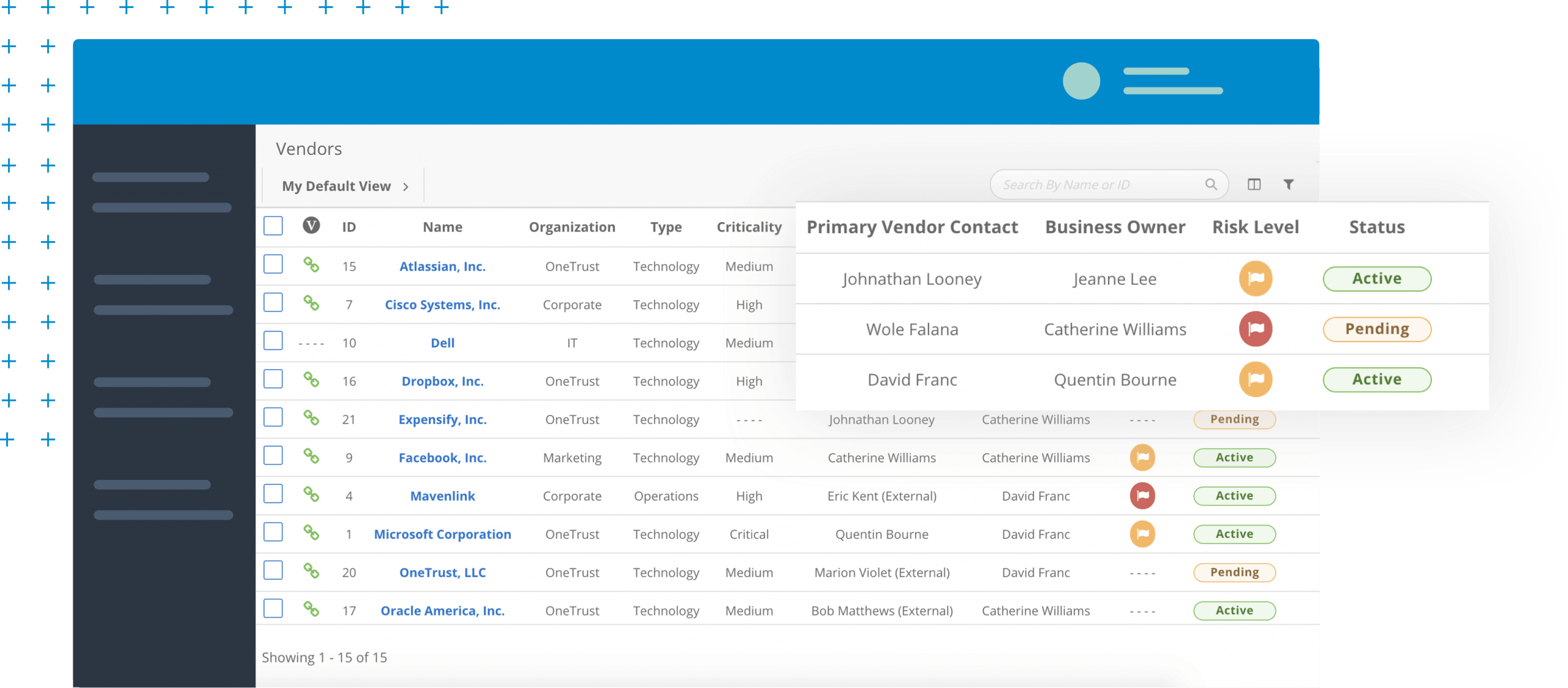
2. Onspring
Procurement technology category: Internal and external risk and compliance
Description: Onspring’s focus is empowering automation in business operations and system management. For procurement teams seeking streamlined processes, the platform is a good option for managing vendor risk and compliance. In addition to identifying risks, they also provide guidance for remediation.
Why we like it:Reviews give Onspring near perfect scores for their customer support. While customers see almost immediate ROI with out-of-the-box functionality, they can also customize the solution. Finally, like RFP360, Onspring is an active member of the Kansas City tech community.
3. Venminder
Procurement technology category: Centralized third-party risk management
Description:
This third-party risk management tool helps procurement teams standardize and centralize vendor information. Featuring tools for new vendor onboarding, vendor risk assessments and ongoing reporting, Venminder seeks to identify and mitigate risk proactively.
Why we like it: Uniquely, Vendminder leverages an unlimited user model, which encourages business-wide awareness of ongoing risk management efforts. Additionally, the platform is easy to navigate and makes document storage and management easy. Finally, one of the biggest benefits users report is the ability to leverage the expertise of the Venminder organization for compliance, risk and legal questions.
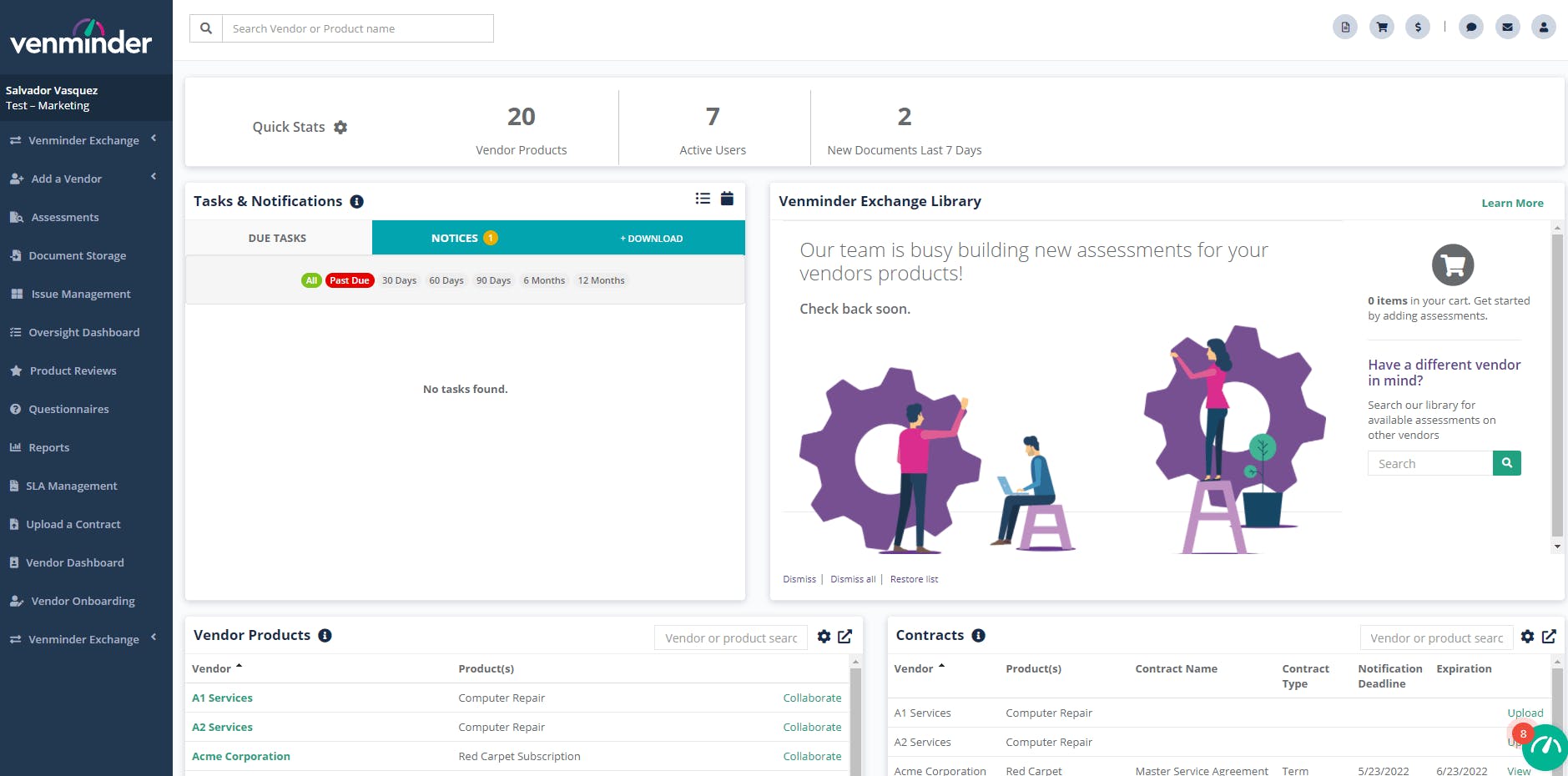
Contract management
4. Conga
Procurement technology category: Contract creation and compliance
Description: One of the most well-known and widely-used contract management systems, Conga’s system is designed to improve consistency and compliance. In addition, the system enables your team to control how contracts are created, shared and stored. Conga also boasts workflow automation tools for contract authoring, negotiation, approval and tracking.
Why we like it: Frequently used by computer software and IT organizations, Conga offers many integration and customization options. At the same time, reviews on the user interface and ease of use are mixed. However, Conga can offer fast ROI for teams who primarily struggle with efficient document creation, version control and clause consistency.
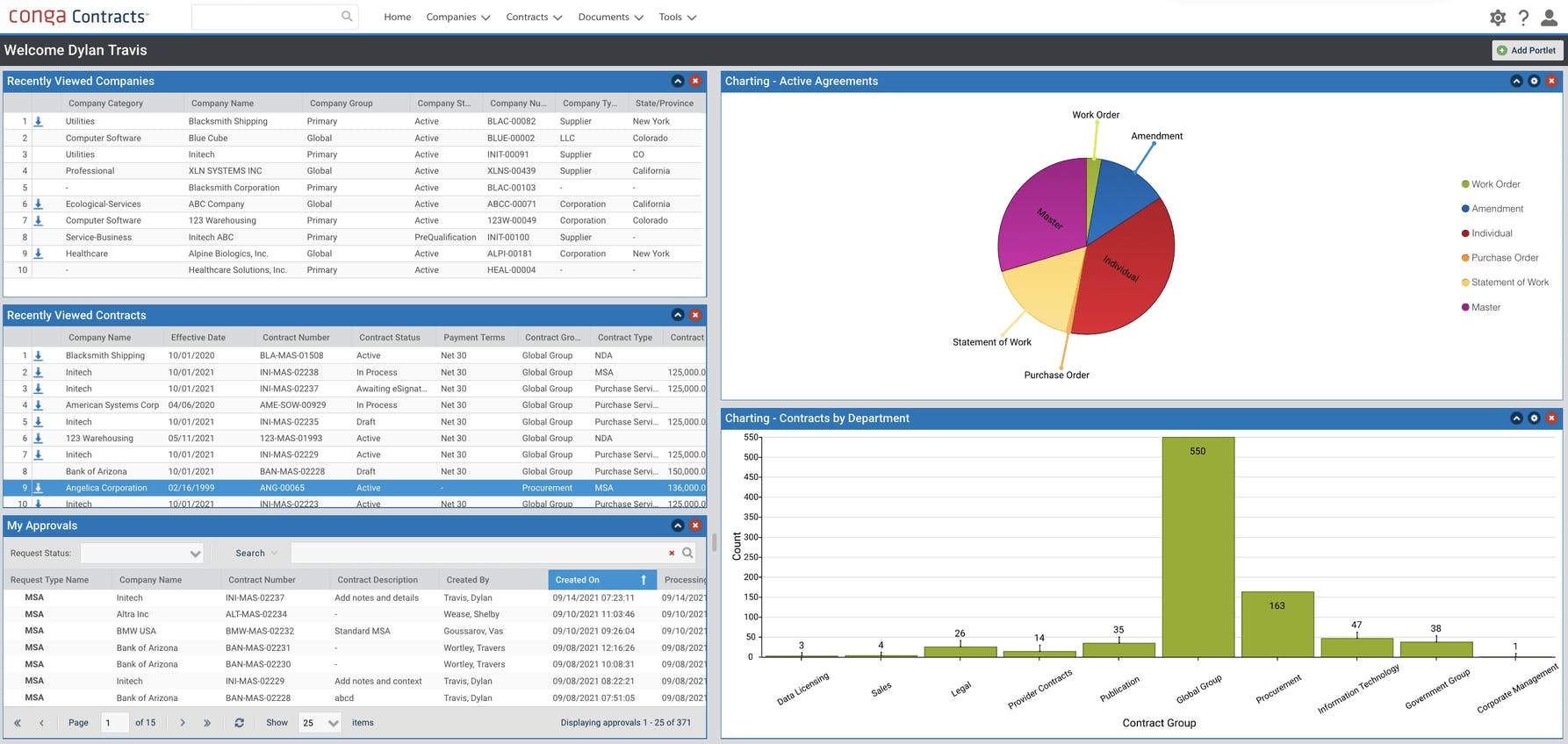
5. Gatekeeper
Procurement technology category: Contract tracking, analysis and management
Description:
Gatekeeper focuses on improving vendor value through contract management. In this cloud-based platform you can store and manage contracts, track vendor information and optimize workflows. Gatekeeper creates a single source of truth for vendor contracts and communication.
Why we like it: This easy-to-use procurement technology helps organizations quickly answer common questions about their contracts like: How many active contracts are there? When do contracts renew? What is the financial commitment associated with these contracts? Indeed, the platform features electronic contract signatures, spend reporting, contract renewal alerts, negotiation notes, obligation tracking, vendor performance scorecards and more.
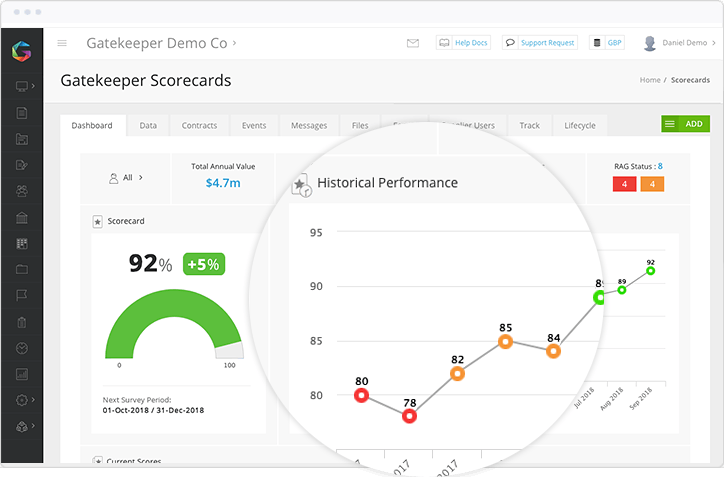
6. Malbek Contrax
Procurement technology category: Contract creation and collaboration
Description: Contracting takes input from a lot of people within your organization. Luckily, Malbek Contrax focuses on bringing procurement, finance, legal and IT together to create and manage contracts more efficiently. In addition to serving as a contract repository, the platform also uses AI to extract contract metadata for analysis.
Why we like it: Malbek is inviting and easy to use. Indeed, it offers extensive customization and integrations with common technologies. For example, Malbek integrates with Microsoft Word, Slack, DocuSign, Salesforce and more. Certainly, these integrations make users more comfortable with the system, consequently improving their overall adoption and ROI.
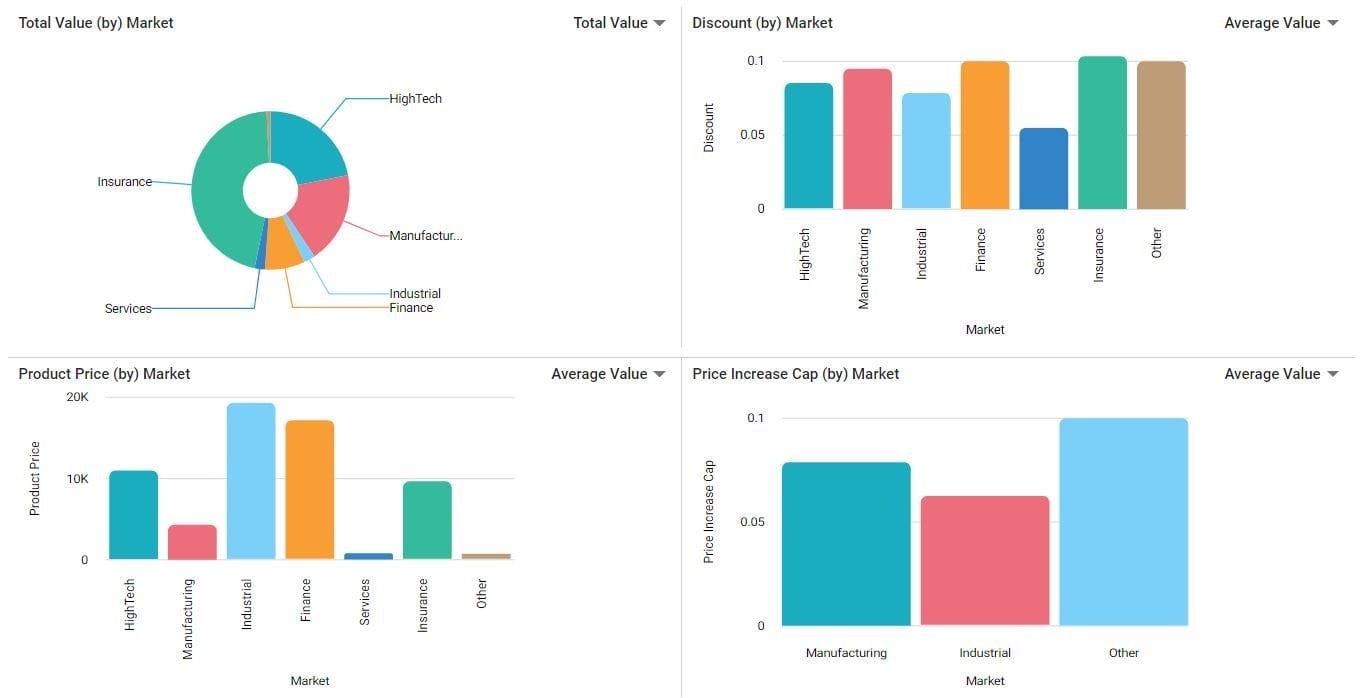
Environmental, social and governance (ESG) tools
7. Circulor
Procurement technology category: Supply chain traceability
Description: Circulor focuses on improving visibility to supplier sustainability including tracing raw materials from origin to manufacturing and measuring supply chain sustainability at various stages.
Why we like it: With both desktop and mobile app versions, Circulor is easy to use and engaging. Leveraging blockchain and artificial intelligence technology, Circulor uses all the latest tools to enable customers to track, monitor and verify their ethical sourcing practices.
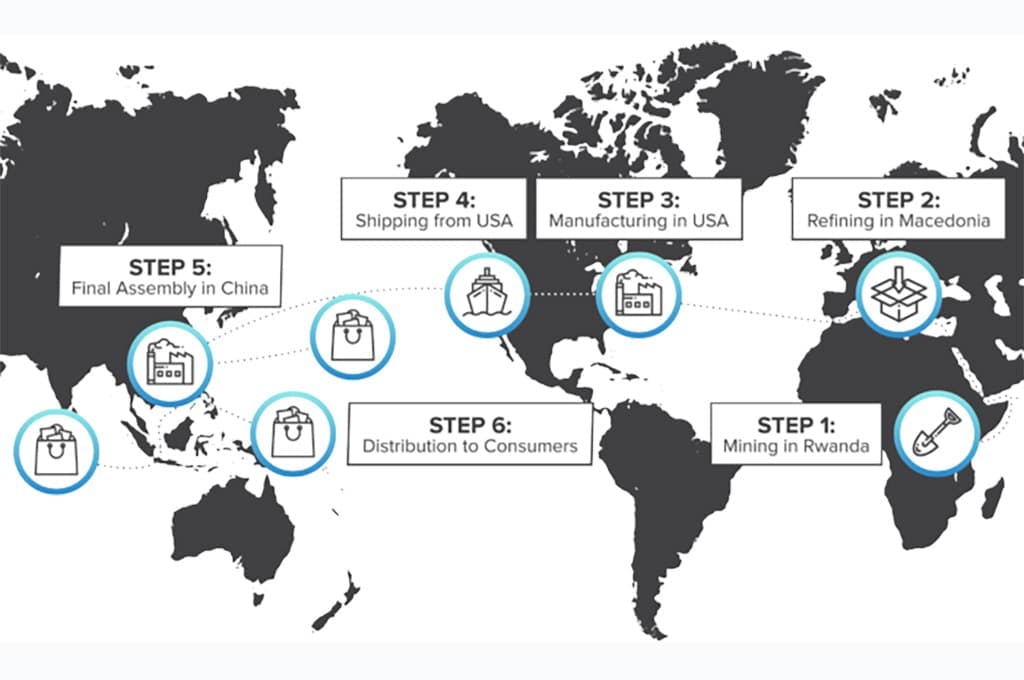
8. Ecovadis
Procurement technology category: Vendor sustainability ratings and improvement
Description: Ecovadis evaluates environmental, social and ethical risks for more than 200 purchasing categories. The platform serves vendors seeking to evaluate and improve their sustainability ratings as well as procurement teams pursuing ESG initiatives.
Why we like it: While some other solutions simply report scores, Ecovadis offers sustainability assessments followed by actionable guidance for improvement. Vendors report that the tool is easy to use and encourages ongoing progress. Additionally, Ecovadis publishes their own corporate social responsibility (CSR) commitments and sustainability actions in an annual report.
9. IntegrityNext
Procurement technology category: ESG evaluation and verification
Description: IntegrityNext evaluates and verifies more than 20 types of sustainability certifications, security requirements and environmental standards. For example, the vendor assessment covers environmental protection, human rights, health and safety, diversity, anti-corruption, data protection and more.
Why we like it: The software quickly and easily enables you to identify supplier red flags. Beyond standard compliance and ESG factors, IntegrityNext also monitors vendor social media channels for reputational threats in real time. In addition, the software enables you to explore multi-tier supplier sustainability for better visibility to your organization’s financial impact.
10. Supplier.io
Procurement technology category: Supplier diversity
Description: Supplier.io is a database that identifies and verifies the credentials of small and diverse businesses. The supplier diversity information is updated monthly and procurement professionals can invite their suppliers to participate.
Why we like it: In addition to finding and verifying diverse businesses, Supplier.io also helps procurement teams track the financial impact of their spend. This database makes it easy to standardize and manage supplier diversity.
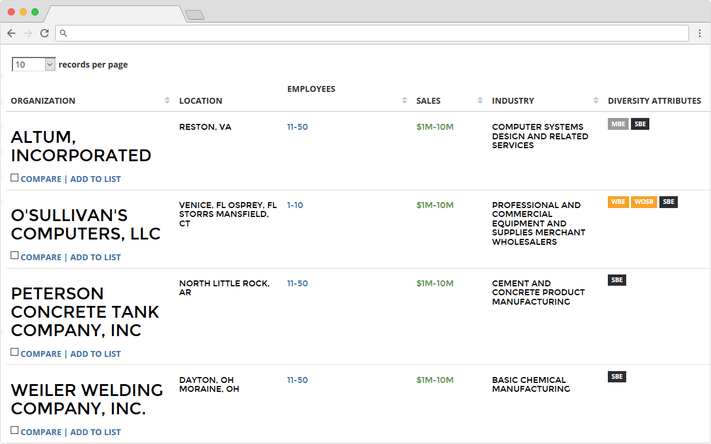
Request management
11. RFP360
Procurement technology category: RFx processes, information requests and questionnaires
Description: Designed to empower collaboration between buyers and potential suppliers, the platform enables the digitization of any question-and-answer style process. Consequently, use cases for this RFP management software span from RFPs and RFIs to due diligence questionnaires and vendor risk assessments.
Why we like it: Naturally, I believe that RFP360 is a valuable and versatile platform for procurement teams. In addition to digitizing the strategic sourcing and RFP processes, RFP360 supports dynamic template creation, request discovery, vendor profiles and more. Primarily used for indirect sourcing and procurement consulting, the platform also improves the vendor experience by creating an answer repository for faster, easier engagement.
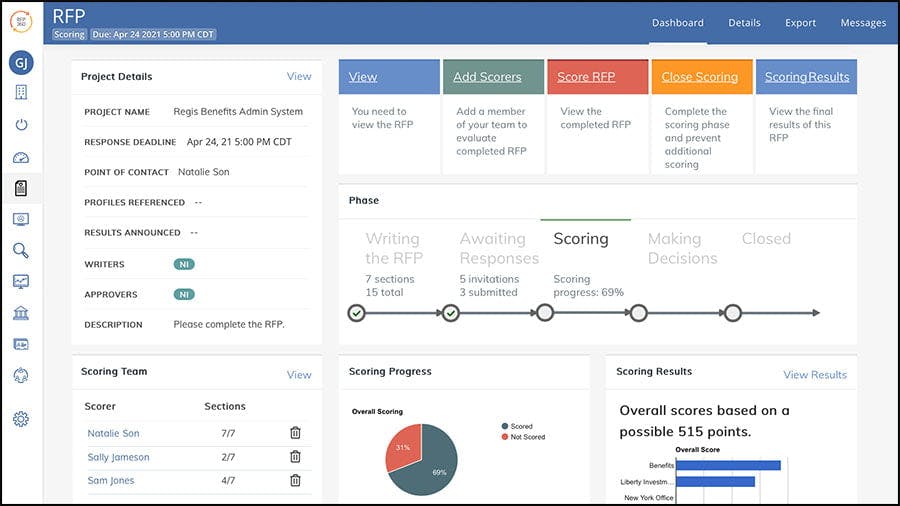
Spend management
12. Precoro
Procurement technology category: Purchase order management
Description: Designed to manage day-to-day spend, Precoro centralizes purchase order creation, approval and processing. In addition to a robust and easy to use product catalog, the system tracks budgets and automates approval workflows.
Why we like it: Precoro is a great option for teams looking to digitize their purchasing processes and increase spend visibility. The software also has inventory management functionality and customizable reporting as well as PO, receipt and invoice matching for expense audits.
13. Procurify
Procurement technology category: Spend and expense management
Description: Automate your PO processes and expense management with Procurify. Indeed, you can build customized approval workflows with thresholds, user permissions, and real-time, spend-to-budget insights. Also, integrations with Slack, ERPs and other procurement tools make the platform even more powerful.
Why we like it: Procurify provides space for collaboration between procurement and departments within the platform, reducing inbox clutter. Additionally, you’ll find robust audit and reporting capabilities. Furthermore, reviews praise the platform’s mobile app, search capabilities and approval process.
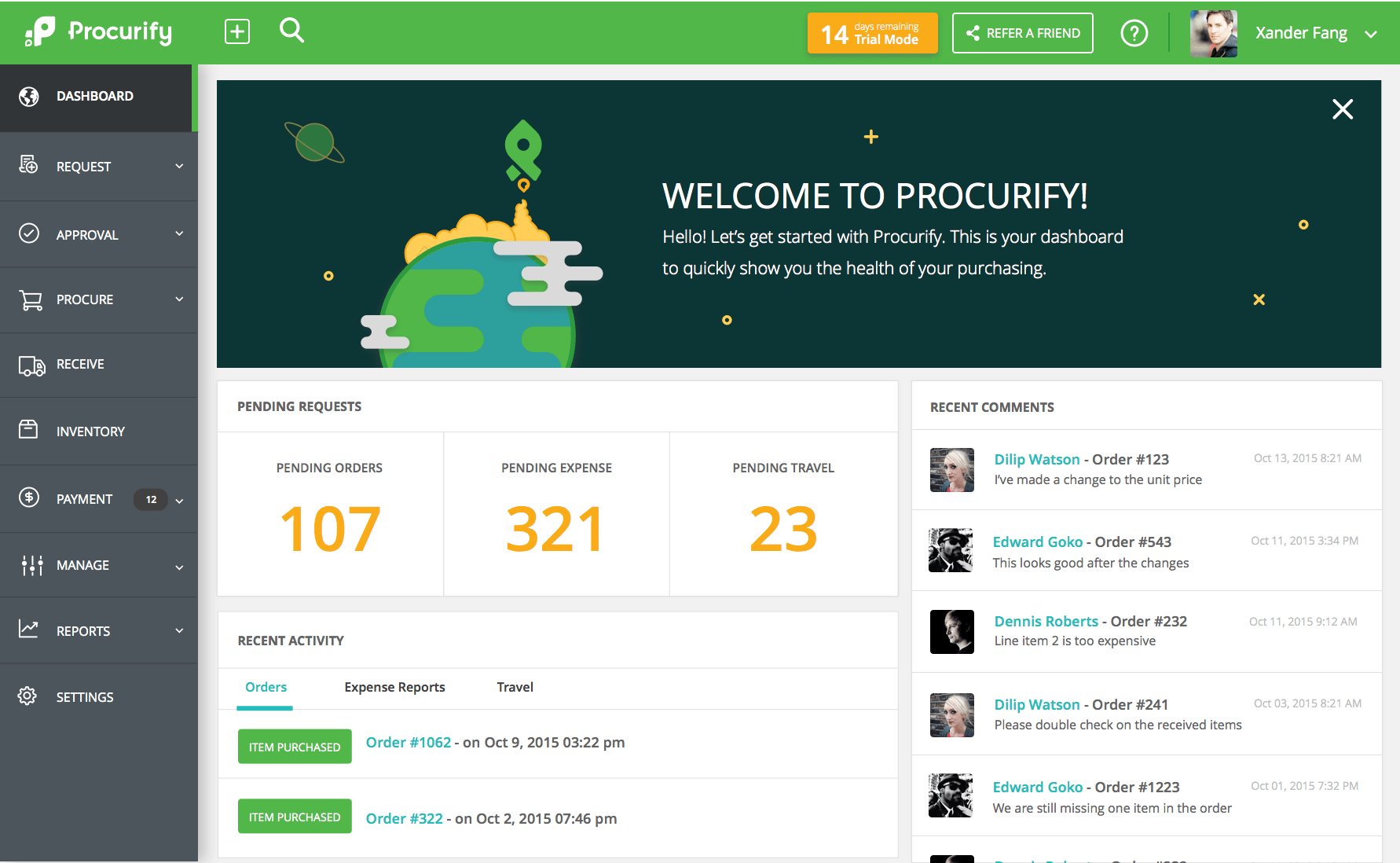
14. SpendHQ
Procurement technology category: Category management
Description: Driving savings for procurement teams is the primary focus of SpendHQ. The software uses customizable, interactive visualizations to illustrate spend by category, vendor and other dimensions.
Why we like it: The extensive functionality in SpendHQ is a good solution for large teams that want to create heavily customized reports. Reviews praise the company’s implementation process and ease of use.
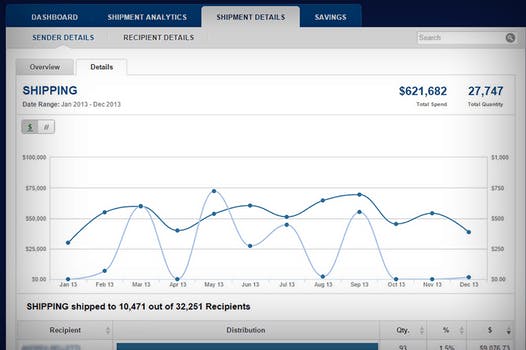
Supplier data intelligence
15. BeRoe
Procurement technology category: Supplier discovery and category intelligence
Description: Providing market information and analysis, BeRoe helps procurement teams discover new, innovative suppliers. The platform also provides category and industry insights to give market context for RFP scoring and vendor evaluations.
Why we like it: When searching for suppliers, the choices can be overwhelming. Often this results in RFPs with dozens of invited vendors and lots of wasted time. Fortunately, BeRoe makes it easy to narrow your search to a shortlist of options with their user-friendly vendor profiles. BeRoe is also the only company we’ve found that offers an R&D catalog to identify negotiation and savings opportunities.
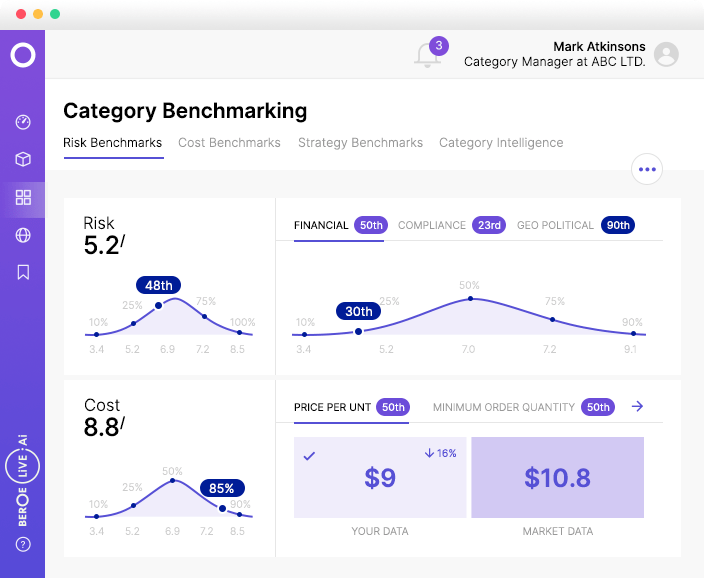
16. HICX
Procurement technology category: Centralized supplier data
Description: Gathering data from the software in your procurement stack and beyond, HICX creates a single source of truth for both direct and indirect supplier data. Indeed, it integrates with most major ERP and P2P systems as well as any other custom-built procurement software. With every data source included, your procurement team can see the big picture, better manage spend and make fully-informed decisions.
Why we like it: Not only does HICX centralize vendor data, it also streamlines vendor onboarding and updates. Once suppliers are in the system, they are able to proactively provide updates to their offerings and information without relying on email and manual updates by your procurement team. The process is similar to a vendor profile. Additionally, HICX can be leveraged for ongoing risk management and compliance.
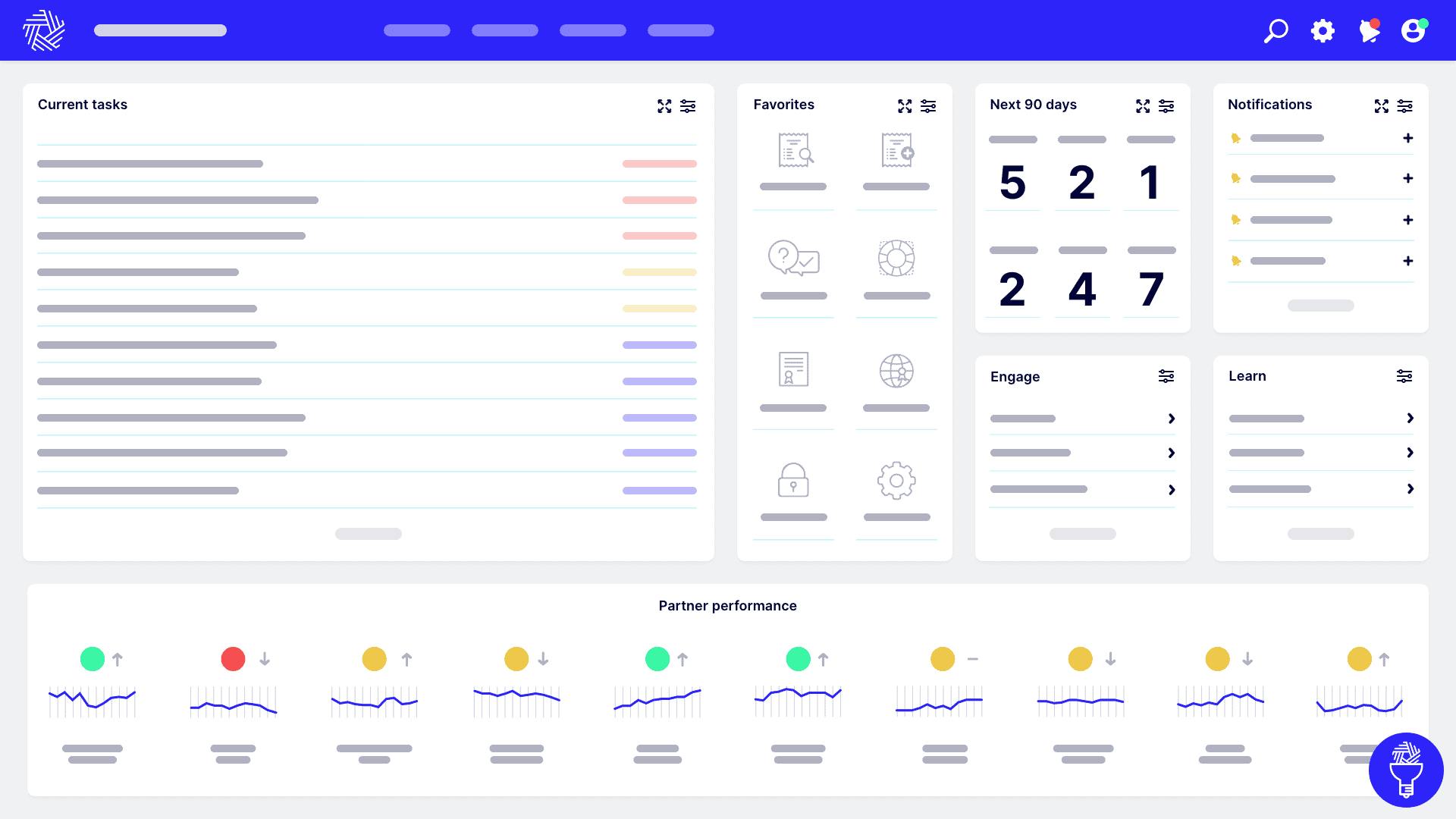
17. Tealbook
Procurement technology category: Supplier data source
Description: For many organizations, digital transformation has been delayed due to a lack of data. In fact, the 2021 Deloitte CPO survey ranks data quality as the primary barrier to effective technology adoption. Fortunately, Tealbook seeks to fill that gap by providing high-quality supplier data. Ultimately, users leverage the data to identify new suppliers, support corporate spend initiatives and explore supplier ESG certifications.
Why we like it: Supplier discovery is one of the biggest benefits for Tealbook users. Not only does the platform deliver a wealth of options, they also enable organizations to narrow their selection based on verified data. Then, organizations can issue their RFP to a shortlist of pre-qualified vendors, ultimately shortening the sourcing cycle.
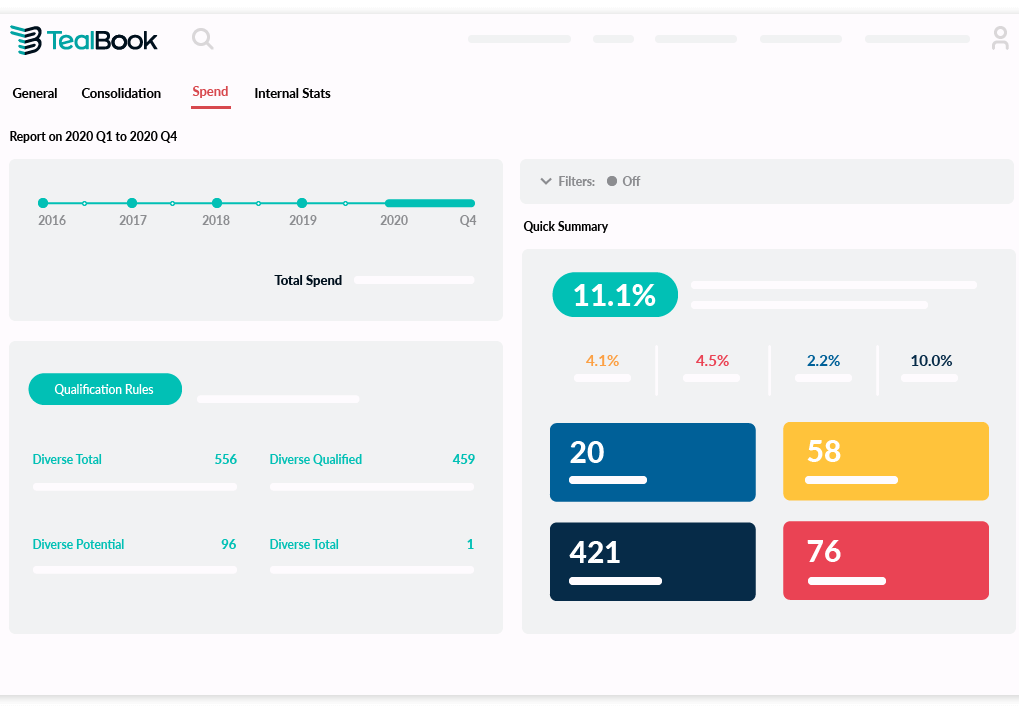
Vendor experience management
18. Leverage
Procurement technology category: Supply chain hub and performance management
Description: Branded as “your supply chain watch tower,” Leverage aims to help procurement teams get a big-picture view of their vendors, spend and performance. In addition, the software enables users to drill down into order management, inventory control and supplier risk.
Why we like it: While still a best-of-breed solution, Leverage offers a suite-like range of solutions. Consequently, it’s highly customizable. The best use cases for the Leverage include manufacturing, retail and consumer products.
19. Vizibl
Procurement technology category: Supplier collaboration
Description: This vendor management platform differentiates itself by focusing on developing relationships and improving communication. Indeed, Vizibl helps procurement teams develop consistent vendor processes. For example, the platform supports onboarding, quarterly vendor evaluations and project tracking workflows.
Why we like it: Vizibl offers an attractive, easy-to-use system. Along with collaboration, the platform enables procurement teams to track progress to goals and ensure maximum ROI. Finally, this open communication approach enables more meaningful supplier-led innovation.
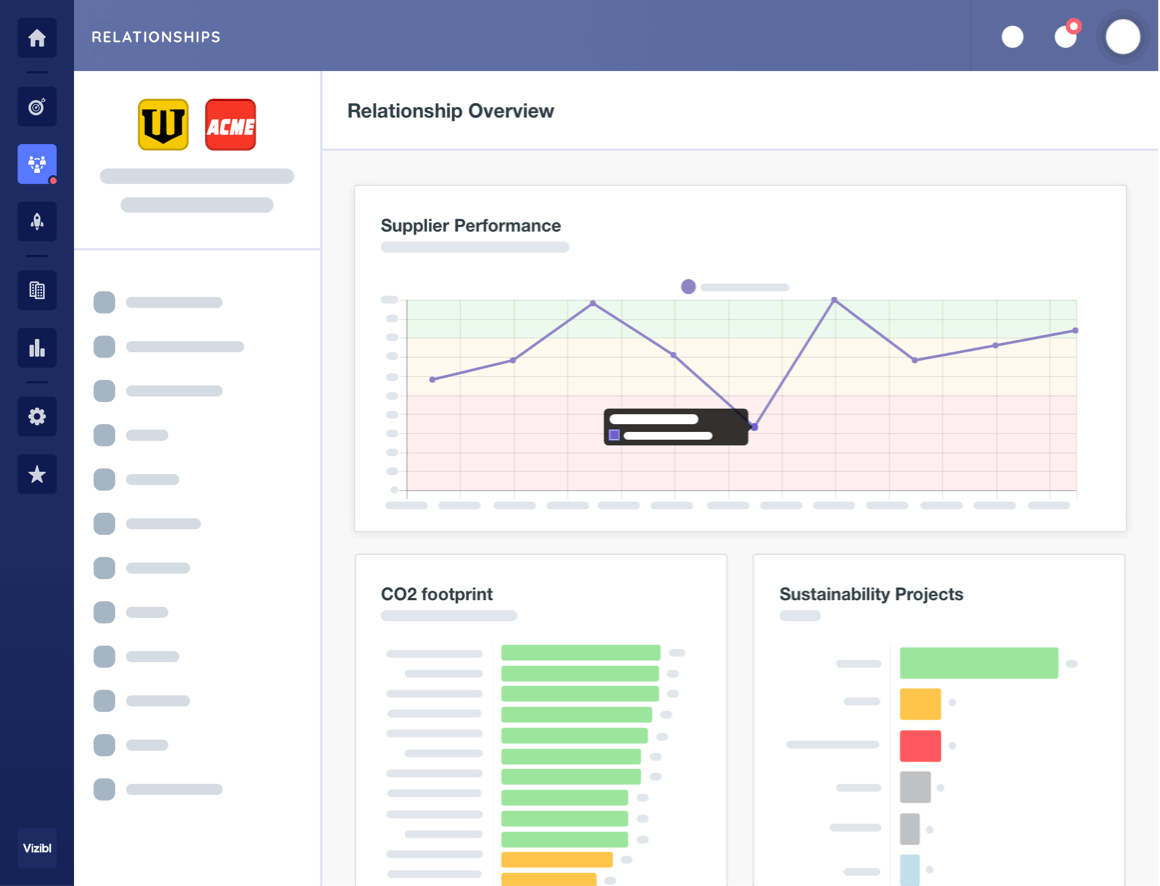
20. SupplyHive
Procurement technology category: Collaborative supplier evaluation
Description: Designed to improve collaboration with internal stakeholders as well as vendors, SupplyHive is relatively simple. Users select a review template, invite team members to score vendor performance and then share the results with vendors.
Why we like it: The SupplyHive simplifies the vendor review process. Indeed, one user compares it to Yelp. Not only can your internal team review and rate suppliers, but you can also see how that supplier performs for other organizations — giving you leverage for future negotiations.
Artificial intelligence and automation
21. Silex
Procurement technology category: Cognitive sourcing
Description: Silex embraces big data to simplify procurement processes and identify new suppliers. For instance, their “cognitive buying assistant” analyzes a purchase request and then guides the user to a sourcing strategy. Sometimes, it recommends leveraging existing vendors or preferred vendors. On the other hand, it may recommend a new supplier altogether.
Why we like it: Silex was founded in 2014, but was named one of the top 50 procurement tools to watch in 2020 by Spend Matters. If automation and AI are part of your procurement goals for 2022, this platform is worth exploring.
22. Suplari
Procurement technology category: Spend visibility with AI insights
Description: Backed by Microsoft, Suplari empowers complex analysis leveraging AI. Indeed, the platform gathers data from ERP and accounts payable systems as well as contract repositories and expense systems. What sets Suplari apart is their data-based predictive algorithms.
Why we like it: The platform regularly receives high marks for its customer support and product capabilities. Additionally, Suplari is easy to use and intuitive — making it a good choice for procurement teams that struggle with adoption.
23. Certa
Procurement technology category: Process automation for third parties
Description: Focused on third party management, Certa applies automation to procurement processes. Their platform includes functionality for vendor onboarding, risk management, contracts and ESG compliance. Leveraging a no-code approach, Certa empowers users to easily modify and customize workflows quickly.
Why we like it: Certa’s platform integrates with more than 100 business technologies, making it an incredible addition to your procurement technology stack. Additionally, the ease of drag and drop workflow elements helps to encourage user adoption. The company also offers a 30-day trial to qualifying organizations.
